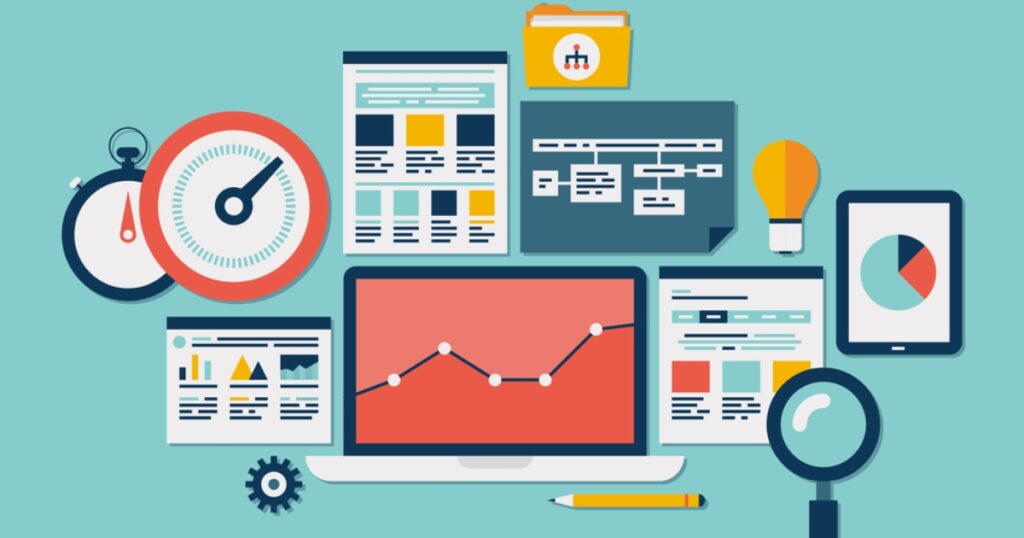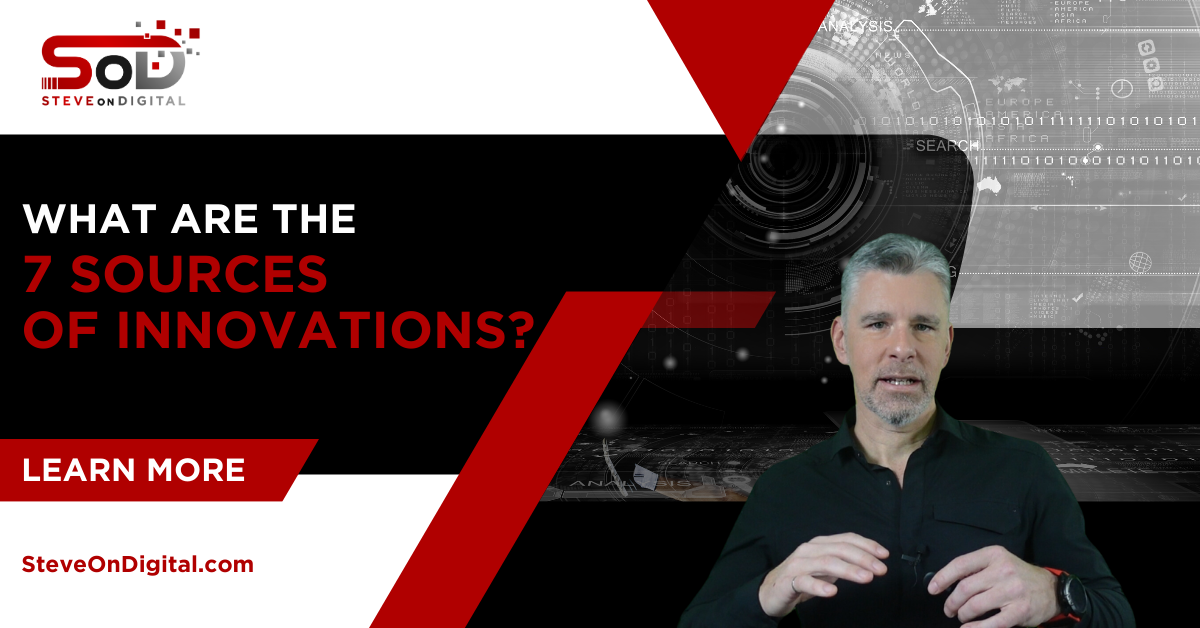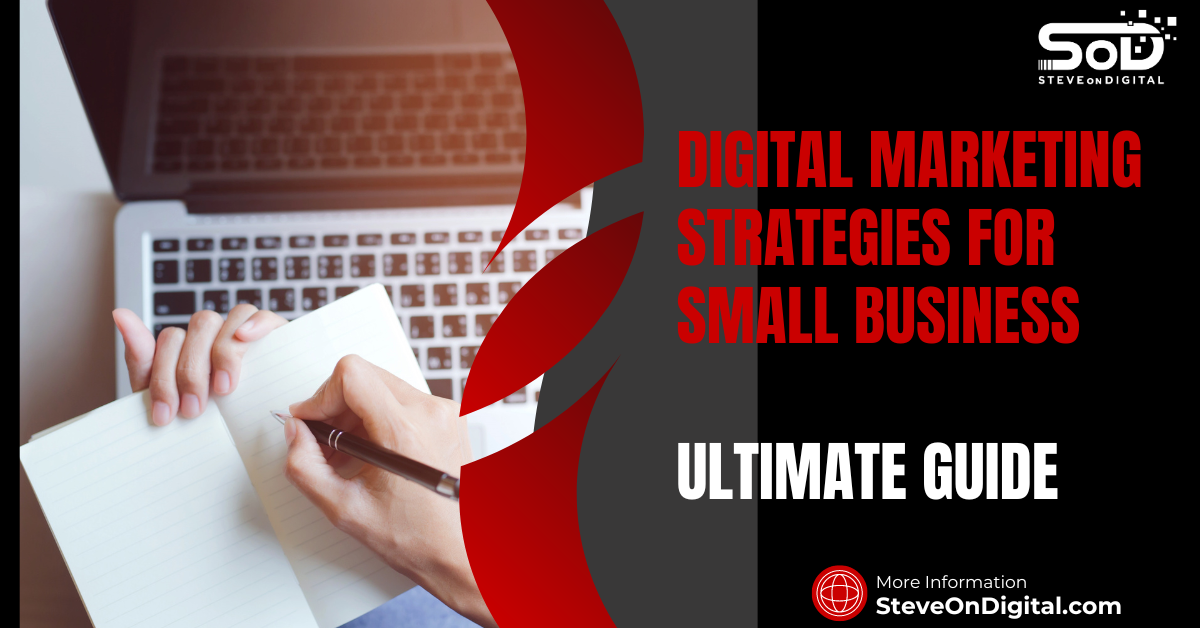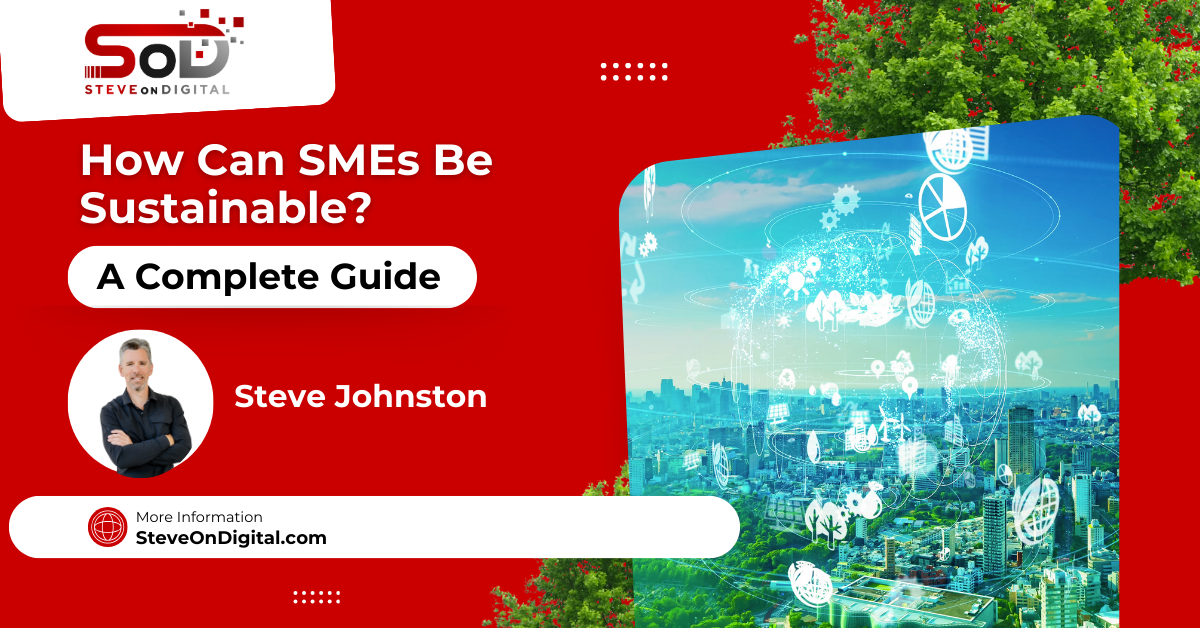In today’s fast-changing business world, being innovative is key to staying ahead.
I’m Steve Johnston, and I’ve learned a lot about innovation from my work in engineering, business, and digital transformation.
There’s a great idea called the “seven sources of innovation” that helps businesses find new opportunities.
This idea tells us that to be successful, companies need to look for chances to improve and lead, not just follow the market.
By understanding and using these seven sources, businesses can grow and set new trends.
| Source of Innovation | Description | Example |
| The Unexpected | Innovations stemming from unexpected events or results. | A pharmaceutical company discovering a new drug application during trials for a different condition. |
| The Incongruity | Innovation from the mismatch between reality and assumptions. | Tech companies developing products for emerging markets that defy traditional consumer profiles. |
| Process Need | Innovations that address inefficiencies or gaps in processes. | Automating manual, time-consuming tasks in data analysis with AI. |
| Industry & Market Structure Changes | Innovations prompted by shifts in the market or industry. | E-commerce platforms expanding into new markets due to increased online shopping demand. |
| Demographics | Innovations driven by changes in population dynamics. | Developing aging-friendly tech products as the global population ages. |
| Changes in Perception | Innovations arising from new ways people view their world. | Sustainable products gaining popularity as environmental awareness increases. |
| New Knowledge | Innovations based on scientific discoveries or new understandings. | Biotech firms leveraging CRISPR technology for gene editing. |
The Unexpected
In the world of business and innovation, the unexpected isn’t just a surprise—it’s an opportunity.
Unexpected events, whether they are successes, failures, or completely out of the blue, have the power to open doors to innovation that we might never have considered otherwise.
My name is Steve Johnston, and in my journey as a Digital Transformation Specialist, I’ve witnessed firsthand how these unforeseen moments can lead to groundbreaking innovative ideas.
One such instance occurred in the early stages of a startup I was advising.
An unexpected shift in the market structure, initially perceived as a setback, unveiled a unique innovative opportunity.
By analyzing this unexpected change, we discovered a niche that was previously underserved.
This revelation led to the development of a product that not only catered to this new market but also set a benchmark for innovation within the industry.
Leveraging The Unexpected
- Stay Vigilant: Constantly monitor the business landscape and market changes. Unexpected successes or failures provide critical data that, if analyzed correctly, can reveal hidden opportunities.
- Embrace Flexibility: Being adaptable in the face of unforeseen events allows you to pivot quickly and capitalize on new innovative opportunities that arise.
- Foster a Culture of Innovation: Encourage your team to view every unexpected event as a potential source of innovation. This mindset can transform challenges into valuable opportunities.
The Incongruity
Incongruity, the mismatch between reality and our assumptions or expectations, often reveals significant opportunities for innovation.
Steve Johnston, a pioneer in modern management thought, emphasized the importance of identifying and exploiting these discrepancies.
In the digital era, where industry and market structure are in constant flux, recognizing incongruities has become more crucial than ever.
From my experience, one of the most common forms of incongruity occurs when there’s a disparity between the actual uses of a product and the ways in which it was intended to be used.
This was evident when a software tool we developed for internal project management was unexpectedly embraced by our clients as a collaborative platform.
This incongruity between our perception of the product and its actual application in the market led us to pivot our strategy, expanding our product lines to cater to this newfound demand.
Strategies To Identify And Exploit Incongruity
- Regular Feedback Loops: Engage with your customers regularly to understand how they use your products or services. Their insights might reveal incongruities between your assumptions and the actual value your product provides.
- Market Analysis: Keep an eye on industry and market structure changes. Analyzing these changes can uncover incongruities that, when addressed, can lead to significant innovation opportunities.
- Encourage Cross-Departmental Collaboration: Different perspectives within your organization can help identify incongruities between the intended use and actual application of your offerings.
Innovation Based On Process Need
In our continuous quest for improvement and efficiency, innovation often stems from a critical examination of our processes.
As a Digital Transformation Specialist, I’ve seen firsthand how addressing process needs can lead to significant innovation, driving systematic innovation and embodying the principles of modern management.
Process Need Innovation
- Identifying Weak Spots: The first step in process need innovation is recognizing inefficiencies. In my experience, this often involves a task-focused review of existing workflows, looking for bottlenecks or areas where resources are overextended.
- Solution Crafting: Once a weak link is identified, the next step is devising innovative solutions. This could mean integrating new technology, like AI to streamline data analysis, or adopting new management practices that encourage more collaborative approaches to problem-solving.
Case Studies
- Manufacturing Efficiency: A manufacturing firm I worked with was struggling with supply chain delays. By analyzing their processes, we identified a weak link in their inventory management. Implementing a just-in-time inventory system, based on Toyota’s systematic innovation approach, not only reduced waste but also significantly improved their supply chain efficiency.
- Service Sector: Another example comes from the healthcare sector, where appointment scheduling was a significant bottleneck. By developing a new scheduling software that leveraged demographic data and patient history, the clinic was able to reduce wait times and improve patient satisfaction.
Implementing Process Innovation
- Continuous Monitoring: Innovation isn’t a one-time effort. Establishing ongoing monitoring mechanisms ensures that processes evolve with changing demands.
- Empowering Employees: Employees often have the most direct understanding of the processes they work with. Creating channels for them to communicate inefficiencies and suggest improvements is crucial.
Changes In Industry Or Market Structure
The landscape of industry and market structure is ever-evolving, driven by changes in technology, consumer behavior, and regulatory environments.

Understanding and adapting to these changes is key to staying ahead.
Market Dynamics
- Industry and Market Changes: For instance, the rise of digital media has completely transformed the market structure of advertising. Traditional players who recognized this shift early and adapted by expanding their digital offerings were able to maintain, or even grow, their market share.
- Demographic Shifts: Changes in the age structure or educational status of a population can lead to greater or lesser demand for certain products or services. Businesses attuned to these demographic changes are better positioned to innovate in response.
Spotting The Change
- Monitoring Trends: Leveraging tools and platforms that provide real-time industry and market structure insights can be invaluable. For example, social listening tools can offer early warnings about shifts in consumer perception or demand.
- Analyzing Data: Regularly reviewing demographic data and market analysis reports helps in identifying emerging trends before they become mainstream.
Adapting To Change
- Flexibility: The ability to pivot quickly in response to industry and market changes is a hallmark of innovative companies. This might mean diversifying product lines or adopting new business models.
- Innovation Strategy: Developing a clear innovation strategy that includes a focus on potential industry and market structure changes ensures that a business can adapt and thrive amidst uncertainty.
Demographics
In the realm of innovation, understanding demographic trends is not just about knowing your audience but foreseeing the future of consumer demand.
As Steve Johnston, I’ve navigated the complex landscape of industry and market structure changes, learning that demographic data serves as one of the most reliable indicators for spotting innovative opportunities.
Demographic Trends
- Age Structure: Shifts in the age distribution of a population can significantly influence product and service demand. For instance, the aging population in many countries has spurred innovation in healthcare technology and services, making them more accessible and user-friendly for older adults.
- Educational Status: The rising levels of education worldwide have led to greater demand for high-quality, knowledge-based content and products, driving innovation in the educational tech sector.
- Disposable Income: Changes in disposable income levels across different demographic segments can highlight emerging markets or signal the need for innovation in pricing strategies and product offerings.
Analyzing Demographic Data For Innovation
Businesses must adopt a data-driven approach to understand these demographic shifts.
Using tools to analyze demographic data enables businesses to predict market trends and identify areas ripe for innovation.
For example, by analyzing demographic changes, my team and I were able to identify a growing interest in sustainable living among younger generations, leading us to develop eco-friendly product lines that have since become a cornerstone of our business model.
Demographic-Driven Innovation
Tailoring products and services to meet the evolving needs of different demographic groups is crucial.
This could mean developing new products for an aging population, adapting marketing strategies to appeal to Generation Z’s values, or leveraging technology to enhance accessibility for people with disabilities.
Changes In Perception, Mood, And Meaning
Perception shapes reality, especially in the consumer market.
Shifts in societal mood, perception, and the underlying meaning people assign to life and products can dramatically alter the innovation landscape.
Perception’s Role In Innovation
- Lifestyle Changes: The COVID-19 pandemic, for example, has fundamentally altered how people view work, leisure, and health, driving innovations in remote work technology, fitness equipment, and mental health services.
- Environmental Consciousness: A growing awareness of environmental issues has changed consumer behavior, with more people now seeking sustainable and eco-friendly products than ever before.
Identifying Shifts In Perception
Staying attuned to these shifts requires businesses to be actively engaged with their audience through social media, market research, and direct feedback mechanisms.
As someone who has been at the forefront of digital transformation, I’ve leveraged these platforms not just to listen but to engage in meaningful dialogues with consumers, gaining valuable insights into their evolving needs and perceptions.
Capitalizing On Perception Change
- Product Line Adjustments: In response to the increased focus on sustainability, we’ve incorporated recycled materials into our product lines and emphasized transparency in our supply chain processes.
- Marketing Strategies: Understanding the importance of mental health in today’s world, we’ve tailored our marketing messages to emphasize wellbeing and the intrinsic value of our products beyond their physical attributes.
New Knowledge
In today’s rapidly evolving business landscape, staying ahead means not just adapting to changes but anticipating them.

As Steve Johnston, my journey through the digital transformation landscape has taught me the critical role of new knowledge — both scientific and non-scientific — in fostering innovation.
Here’s how businesses can harness this invaluable resource.
The Power Of Knowledge
Knowledge is the cornerstone of innovation.
It transforms industries, reshapes market structures, and redefines what is possible.
From the latest advancements in AI to understanding shifts in consumer behavior, new knowledge enables businesses to not only solve existing problems but also to uncover new opportunities for innovation.
- Scientific Breakthroughs: These often lead to revolutionary products and services. For example, the development of CRISPR technology has opened new avenues in medical treatment and genetic research.
- Non-Scientific Insights: Such as demographic changes or shifts in consumer preferences, can lead to innovative business models and marketing strategies that better align with customer needs.
Knowledge Acquisition
Continuous learning and knowledge absorption are non-negotiable for businesses aiming to innovate.
Here are strategies to ensure your organization remains at the forefront of new knowledge:
- Invest in Research and Development (R&D): Allocating resources to R&D allows businesses to explore new ideas and technologies, leading to the development of innovative products and services.
- Collaborate with Academia and Industry Partners: Partnerships with universities and other companies can provide access to cutting-edge research and diverse expertise.
- Leverage Digital Platforms for Learning: Online courses, webinars, and forums are invaluable resources for keeping abreast of the latest trends and developments in your industry.
Knowledge Application
Acquiring knowledge is just the first step; applying it to drive innovation is where the real challenge lies.
Here are ways businesses can effectively translate new knowledge into innovative opportunities:
- Incorporate New Technologies: Adopting new technologies can enhance your products or services and improve internal processes, leading to increased efficiency and better customer experiences.
- Develop New Business Models: Insights into changing market dynamics and consumer behavior can inspire new business models that meet evolving customer needs in unique and value-adding ways.
- Foster a Culture of Innovation: Encourage employees to share their ideas and insights, and provide them with the tools and support needed to experiment and innovate.
Assessing Your Business Against The 7 Sources Of Innovation
| Source of Innovation | Questions to Consider |
| The Unexpected | How does your business respond to unexpected successes or failures? |
| The Incongruity | Are there gaps between reality and assumptions in your industry that you can exploit? |
| Process Need | What processes in your operation could be made more efficient or effective? |
| Industry & Market Structure Changes | How well does your business adapt to industry and market changes? |
| Demographics | Does your product/service line meet the needs of changing demographics? |
| Changes in Perception | Are you keeping pace with shifts in societal values and perceptions? |
| New Knowledge | How does your business incorporate new knowledge or technologies into innovation? |
Conclusion
Recap of the Seven Sources
We’ve delved into the seven pivotal sources of innovation, which include:
- The Unexpected: Leveraging surprises within the market or your operations as opportunities for innovation.
- The Incongruity: Recognizing the gap between reality and expectations to create value.
- Process Need: Identifying and addressing inefficiencies to introduce systematic innovation.
- Industry And Market Structure Change: Adapting to or capitalizing on shifts in the market.
- Demographics: Understanding and anticipating changes in population dynamics.
- Changes In Perception: Adjusting to societal shifts in mood, meaning, and values.
- New Knowledge: Harnessing scientific breakthroughs and non-scientific insights for innovation.
Each of these sources offers a unique lens through which to view potential innovation, from the ground up to the macro level, encompassing both internal processes and external market forces.
Creating A Culture Of Innovation
Innovation is not just about having a good idea; it’s about creating an environment where those ideas can flourish.
Here’s how you can foster a culture of innovation:
- Encourage Curiosity: Promote an atmosphere where questioning and exploring are valued over the status quo.
- Diversify Perspectives: Incorporate views from different disciplines, backgrounds, and experiences to enrich the pool of ideas.
- Embrace Failure: See setbacks as stepping stones rather than stop signs, and learn from each attempt.
- Provide Resources: Allocate time, space, and resources for experimentation and development.
- Celebrate Innovation: Acknowledge and reward innovative ideas and their implementation, regardless of the outcome.
| Strategy | Implementation | Benefit |
| Encourage experimentation | Allocate time and resources for employees to explore new ideas. | Spurs creativity and potentially groundbreaking innovations. |
| Cross-functional teams | Create teams from different departments to solve problems. | Diverse perspectives can lead to more holistic and innovative solutions. |
| Continuous learning | Provide access to courses, workshops, and seminars. | Keeps the team updated on the latest trends and technologies. |
| Reward innovation | Recognize and reward efforts and achievements in innovation. | Motivates employees to think outside the box and contribute ideas. |
Looking Forward
The journey of innovation is ongoing.
The digital era is rapidly evolving, and staying competitive requires a proactive stance on innovation.
Regularly revisit these seven sources of innovation to identify new opportunities and challenges.
The future belongs to those who are prepared to explore, adapt, and innovate.





